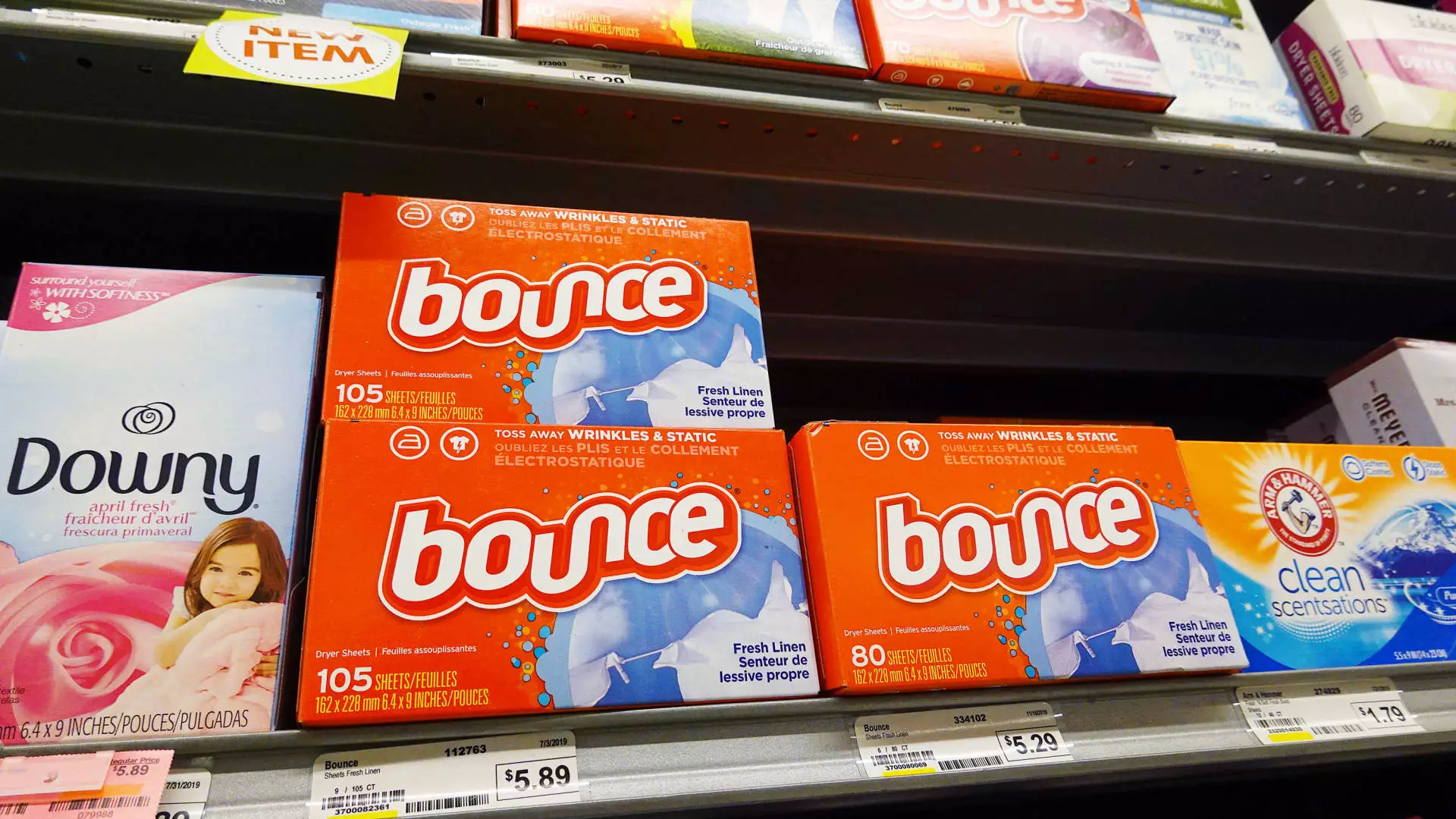On Friday, Procter & Gamble (P&G) revealed its fiscal first-quarter financial report, which fell short of analysts’ expectations. Reflecting a broader economic trend, the company is grappling with declining demand, particularly in their significant market of Greater China. This discrepancy between forecasts and actuals resulted in a modest dip in P&G’s stock price, a clear indication of investor sentiment amidst mixed financial results.
P&G’s adjusted earnings per share (EPS) of $1.93 marginally surpassed expectations of $1.90, though the company reported a net income of $3.96 billion, which translated to $1.61 per share—lower than the previous year’s $4.52 billion, or $1.83 per share. These figures reflect the challenges faced as net sales dipped by 1% to $21.71 billion, a stark contrast to the expected $21.91 billion. An important distinction here lies in the organic revenue growth, which rose by 2% when considering pricing effects but highlighted flat volume, indicating stagnant consumer demand.
While the financial data painted a somewhat optimistic picture through adjusted earnings, the underlying fundamentals reveal an intricate web of challenges that need addressing. P&G’s revenue decline showcases the pressure placed on the company’s product lines in various market conditions.
P&G has long been a formidable player in the consumer goods sector, yet it has not been immune to the shifting consumer landscape. After witnessing a rise in demand during the pandemic, the company now finds itself dealing with the consequences of several years of price hikes, which have inadvertently led to reduced consumer purchasing. Despite a notable increase in their volume in the U.S., where growth was seen across eight out of ten categories, the persistent weakness in Greater China casts a long shadow over P&G’s overall performance.
The fact that the company is optimistic about its volume growth in specific U.S. categories but is simultaneously contending with a decrease in China stresses the dissonance in consumer behavior globally. CFO Andre Schulten noted the lack of a trend towards private-label products, suggesting P&G retains strong brand loyalty domestically, in stark contrast to the trends emerging in international markets like China.
Among the various divisions, P&G’s beauty business faced notable challenges, with a 2% drop in volume attributed largely to a steep decline in organic sales exceeding 20% for its high-end SK-II brand. These results underscore how luxury segments can be sensitive to changing economic conditions, particularly as consumers tighten their spending. Contributing to this scenario, the health care and baby products divisions reported 1% volume declines, indicating a more comprehensive challenge throughout consumer staples.
It is particularly concerning that the baby care segment, including the well-known Pampers brand, saw organic sales fall by mid-single digits. Such declines can resonate profoundly in terms of brand perception and long-term loyalty, particularly among young parents who may turn to alternative options during times of financial strain.
Despite the challenges, P&G’s grooming division showcased resilience with a 4% growth in volume—an achievement the company attributes to innovation within its product offerings. Similarly, its fabric and home care business demonstrated a modest 1% volume increase, with established brands like Tide and Febreze showing enduring consumer favor.
This duality—where some segments thrive while others struggle—highlights the significance of innovation in consumer goods. As market competition intensifies and consumer preferences continue to evolve, P&G must consistently adapt to maintain its market position.
Looking ahead, P&G remains steadfast with its forecasts for fiscal 2025, predicting core net earnings per share between $6.91 and $7.05, along with revenue growth of 2% to 4%. However, it acknowledges that significant headwinds may linger, particularly in markets like Greater China. This cautious optimism could be crucial as P&G navigates the complexities of consumer demands and economic fluctuations.
While Procter & Gamble continues to enjoy solid profitability and some areas of growth, the broader landscape signifies a pressing need for adaptability and strategic innovation. As the company confronts these pressures, its ability to manage consumer sentiments and market trends will be critical in ensuring sustainable growth and shareholder confidence in the months to come.

